Uses of Angle Grinders and Grinding Accessories
Angle Grinders
Angle grinders are hand-held power tools that can be used for a range of different jobs including grinding, cutting, cleaning and polishing surfaces making it an invaluable tool to have in your collection
every major manufacturer (Bosch , Makita , Ryobi , Metabo) make and sell their own brand of angle grinder, the real differences come in the overall build quality of the tool and the power of the motor.
It is possible to buy an angle grinder for less than R400 but as the saying goes, you get what you pay for. The quality of the assembly won’t be that great and the motor will more than likley be lacking in power, but if it’s only going to get used less than frequent for sharpening the mower blade, then a cheaper model will be more than good enough.
If, however, you foresee it getting used daily, a powerful and robust model is going to become a better buy as it won’t fail on you midway through a job.
Types of angle Grinders
Determining the cutting depth and material is crucial when deciding which angle grinder to purchase.
Common sizes in angle grinder builds:
- 115mm – 4 1/2 inches
- 125mm – 5 inches
- 150mm – 6 inches
- 180mm – 7 inches
- 230mm – 9 inches
Really the most common size of disc used for general do it yourself needs are the 115mm discs .
the smaller 115mm discs are the most common and readily available they also tend to be the cheapest.
In terms of size, angle grinders are available in small, general and light purpose in the size up to 7 “ or 180mm and large in the size 9 “ or 230mm, essentially suited for sharpening or cleaning.
Heavier jobs such as cutting big diameter steel pipes, steel I-beams or large concrete slabs , the larger 230mm machines are more suited. Essentially, since they also tend to have a higher wattage which equates to more power.
Smaller angle grinders operate at higher speeds, 10,000 rpm with the larger grinders rotating at around 6000 – 6500rpm.
Electric: By far the most common type, power can be drawn from either mains (230 volt, general and domestic use), 110 volt via a step down transformer (mostly professional and building site use) or cordless through an on-board rechargeable battery (most commonly 18 volt Li-ion). Mains or transformer powered grinders normally range from 500 – 2,000 plus watts in power with the lower wattage items being at the cheaper end of the scale
Petrol: More suited to site use, petrol cutters are large-scale angle grinders used for cutting steel, bricks and blocks, paving slabs etc…. and as such are not suitable for grinding, just cutting. The tool features a small petrol engine that drives the cutting disc
Pneumatic or Compressed Air: As with the above, this power source is mainly found in professional situations such as mechanics garages and workshops. The air to drive the tool is produced by a compressor and then channelled via pipes to the tool itself that then drives the cutting or grinding disc. These tools often operate at slower speeds than their electric cousins
Primary uses of Angels grinders
This power tool is designed primarily for cutting through materials or grinding.
Mainly only good for making straight cuts, but can be used for curves obviously are confidence and expertise grow.
Grinders can be used for:
Cutting steel sheets, bars or rods, rusted bolts and screws
Cutting bricks, blocks, tiles, slabs and even chopping out old mortar from joints
Sharpening blades such as mover blades, shears, axes and other chopping tools
Cleaning residue , paint and rust from metal surfaces and tidying up welds etc
plunge-cuts can also be done in tiles like a section out of the centre of a tile or slab
which ever trade you may be involved in or enjoy as a hobby in your spare time an angle grinder is an absolute essential tool that you will most certainly find regular use for.
practice with the tool and you will begin to get used to its ways and the way it operates and through this you will then most certainly find other additional ways to use it in different areas.
cutting curves and shaping bricks, tiles or slabs will also be easily achievable with some practise.
Angle Grinder consumables and Accessories
Discs will either have the word “Stone” or “Metal”printed on them. The material you work on should only be cut or ground with the disc labelled for that material.
Stone cutting discs are able to cut metal but they will rapidly tear up and fall apart this is because they tend to chop through material as they chop their way through debris will start to fly all over making it dangerous for the operator and any by standers.
never ever attempt to use your grinder without the guard attached, its there for a reason!
- Cut off Discs (metal and stone): cut off discs are used for cutting metal objects and stone cut off disc are for cutting stone or bricks
- Diamond Cutting Discs (tiles, mortar raking, slate, marble, granite, abrasive materials, asphalt: a type of disc normally diamond tipped on its edges in order to cope with cutting the mentioned hard materials. you will need to ensure that they are wet or dry cut (wet cut needs to be kept wet when cutting, dry can be used without water)
- Abrasive Discs/Pads and Sanding Discs/Pads: Velcro backed or a method of attachment so that they can be fixed to a soft pad or base for attachment to the grinder or sander. Different grits or grades from 40 grit up to 400 grit. Once the paper has worn down it can be pulled off and replaced with a new sheet
- Grinding Discs (Metal and Stone): metal grinding and stone grinding types and are used for grinding down metal or stone to either shape it or take off lumps or peaks
- Wire Brush and Twist Knot Cups: wire brushes for your grinder. Groups of wires are twisted up and placed around the perimeter of the cup that then screws onto your grinder.
The twisting action of the wire makes it very durable , removing paint and rust with ease.
- Flap Sanding Discs: ideally used for cleaning up surfaces. They are also available in a range of grit types so by combining rough down to smooth, you can get a great finish
- Polishing Pads: mainly used for polishing and finishing more robust surfaces. also available for polishing paintwork and more delicate surfaces. When working on delicate surfaces, using a larger 230mm grinder would be a better option as these operate at slower speeds
When approaching a project using an inferior brand will more than likely wear quicker.
Different Parts of an Angle Grinder
Regardless of the manufacturer,all angle grinders will have the same, basic features.
models will come with a basic on/off push slide switch, so the disc will power up immediately. Attention should be given so be sure to hold the power tool with a firm grip when powered on.
As with all power tools, eye and hand protection should always be worn. There will be a lot of material and sparks if working on metal from this power tool even with the guard in place..
Be especially sure to tighten in the direction which will not allow it to come undone when the it’s in motion.grinders also have a disc locking button which allows you to lock the turning action of the wheel while you undo and tighten for new discs or attachment
NOTE: The disc guard can be removed from a grinder for ease of viewing only! Never actually use it with the guard removed
the motor coils need to be connected to complete an electrical circuit and to do this a copper or commutator is fixed to a sprung shaft with the springs pressing the brush that is attached to a section of copper wire on to the rings so that current is conducted and supplied.
The brushes themselves can wear down to such a point that the tool will stop working. This is an indication that they need to be replaced.
Old worn out bushes can be unscrewed and removed from the motor body and replaced with new ones
Safety
Wear old clothes as it can be a messy job and make sure that you don’t have any loose items hangin down. As grinders run at extreme speeds, loose items can easily become entangled and draw the tool into your body causing bad injuries
Always wear eye protection, ear protection, robust gloves and footwear such as a pair of heavy boots like steel toecap safety boots
Make sure projects are fixed firmly to a decent work surface.the torque generated by the grinder can send them shooting off into the distance as a result of not securing properly
Efficient space to work in safely will allow you to move the tool around without it catching on anything and ensures you don’t work yourself into a corner
Become accustomed to the feel and weight of the power tool when it’s both running and not. The gyroscopic force generated by the rotating disc or attachment can feel a bit strange so it’s worth becoming familiar with how that feels
Always grind and cut away from your body and make sure that the guard directs any debris away from you
Be sure that the power tool is turned off at the mains , when not in use, If you accidentally lean or stand on it, it can start up and cause damage
Be sure that any and all attachments are fix securely to the grinder so that they can’t come off while the tool is running
Use only grinding discs for grinding and cutting discs for cutting – essentially, only use a given disc or attachment for its intended use
Never ever be tempted to use the tool without the safety guard in place

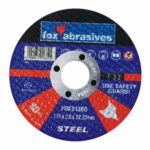
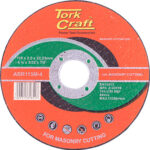
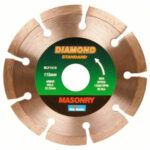
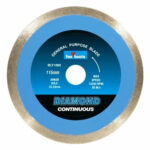
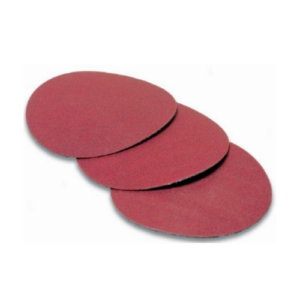
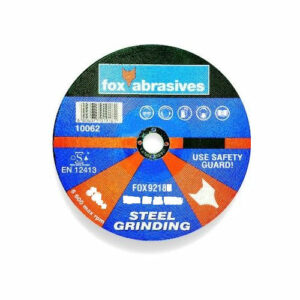
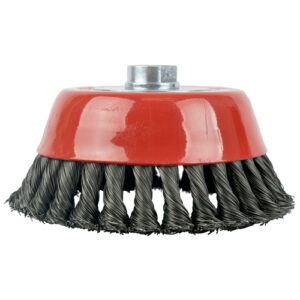
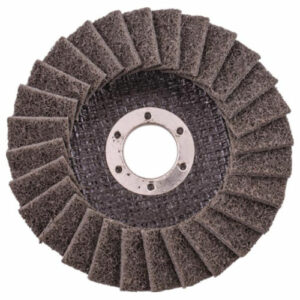
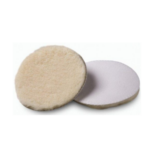
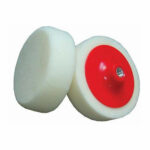
Comments
Add comment